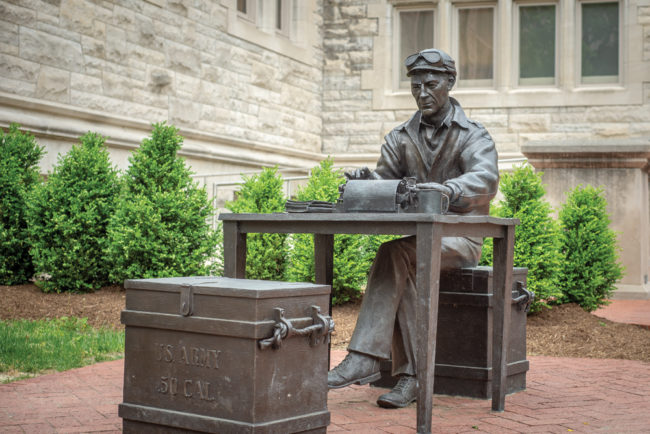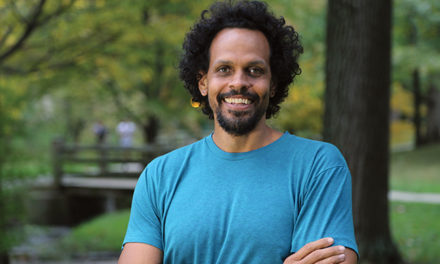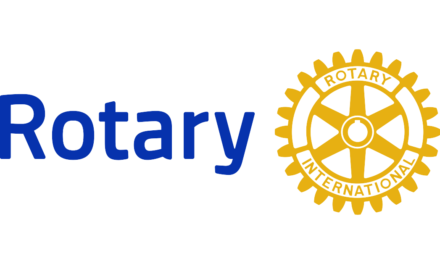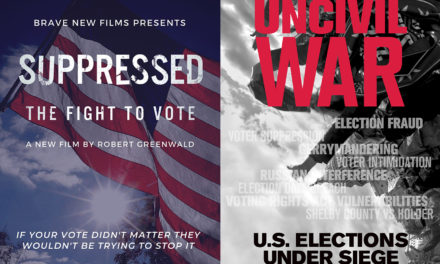
Editor’s note: The following is a letter from the editors of the Indiana Daily Student, Indiana University’s student-run newspaper.
By CAROLINE ANDERS and EMILY ISAACMAN
This could be the last semester the Indiana Daily Student exists as it has for nearly 153 years.
This isn’t meant to be alarmist, it’s meant to be transparent. The IDS has been struggling financially for years, but the situation has never been this grim.
We’re on track to run out of money by May.
The IDS is in a strange position: we’re independent, but only when making editorial decisions. The university can’t tell us what to write, but we can’t fundraise or apply for grants without its approval. IU governs our structure. Our professional staffers are IU employees, but we foot the bill for their paychecks and health insurance.
Discussions about ways to save the IDS have been swirling for a long time, but the COVID-19 pandemic dramatically condensed the time we have to work with. We expected to get to this point in a few years, not a few months.
Our funding comes mostly from advertising revenue and donations, which are both lower than ever. Our fall semester budget — including professional staff salaries, printing costs and student pay — was $327,603.05.
When we run out of money, the Media School or university could step in to take on our deficit. No one knows how much of our budget they would cover or how this would change our structure and content.
In 2017, we cut our print paper from five days a week to two. Last semester, we reduced our printing schedule to just once a week. We post about 20 stories to our website daily, but the loss of our print product has reduced opportunities for ad revenue and chances for students to learn about page design.
An editor, working the hours of a near-full time job, makes an average of $50 per week. Reporters are paid $10 per story — regardless of how long that story took to report. We’re grateful for the money that we make, but acknowledge we already cannot pay our staff members what they deserve.
Students are responsible for all editorial decisions, but we rely on a professional staff to help us with jobs that are simply too large for students to take on, such as managing payroll and sellings ads. Pro staff are IU employees, but the IDS pays their salaries.
They’re our largest expense, or about 35% of our budget. We’ve already lost two in the past two years, and the six remaining have been forced to take on larger roles for no additional compensation.
The IDS is an auxiliary of the university, meaning all donations and fundraising efforts for our Legacy Fund must be preapproved by the IU Foundation. This has limited our ability to send transparent mass emails or organize fundraising campaigns to the scope we need.
And fundraising wouldn’t be enough, anyway. The IDS needs a new business model.
In 2018, IDS Director Jim Rodenbush proposed a plan to converge student media — a structure that’s proved financially successful at several other universities. Media School Dean James Shanahan has yet to approve this plan or other changes recommended by alumni.
We’ve been trying. We will keep trying. But if the university refuses to recognize how urgently we need its help in creating a new model, and no one else steps in, we don’t know what more we can do to save our newspaper.
The last few years have proven that excellent reporting is no longer the key to keeping the IDS financially stable. Our coverage, reporters and newspaper are routinely recognized as some of the best college journalism in the nation.
We run the IDS as college students who are juggling coursework, job applications and other extracurriculars and jobs. We work here to learn about journalism and grow as reporters, but mostly to make sure Bloomington’s residents know what they need to know.
We’ve broken investigations on professors sexually harassing students that have led to resignations. We’ve catalogued the spread of COVID-19 through our community. We’ve worked diligently to document school board decisions and look into the questions and concerns you share with us.
We’ve maintained a staff of more than 150 students and expanded our coverage beyond campus as the city’s professional local news outlets have continued to shrink. At the Herald-Times, Bloomington’s other print journalism outlet, an editorial staff of 13 covers the city’s more than 85,000 residents.
The biggest way you can help us right now is by donating to the IDS Legacy Fund if you’re able. This money supports our editorial operations and will help us stay afloat as we map out what the future of the IDS might look like.
Donations will extend the life of the IDS as it exists today, but they will not save it. We need a more comprehensive solution. We need administrators to recognize that waiting is no longer an option.
This letter is our attempt to be entirely transparent with you. Thank you for your loyal readership. We hope we’ll be able to continue doing the work we do for you.
Caroline Anders, co-editor-in-chief
Emily Isaacman, co-editor-in-chief















